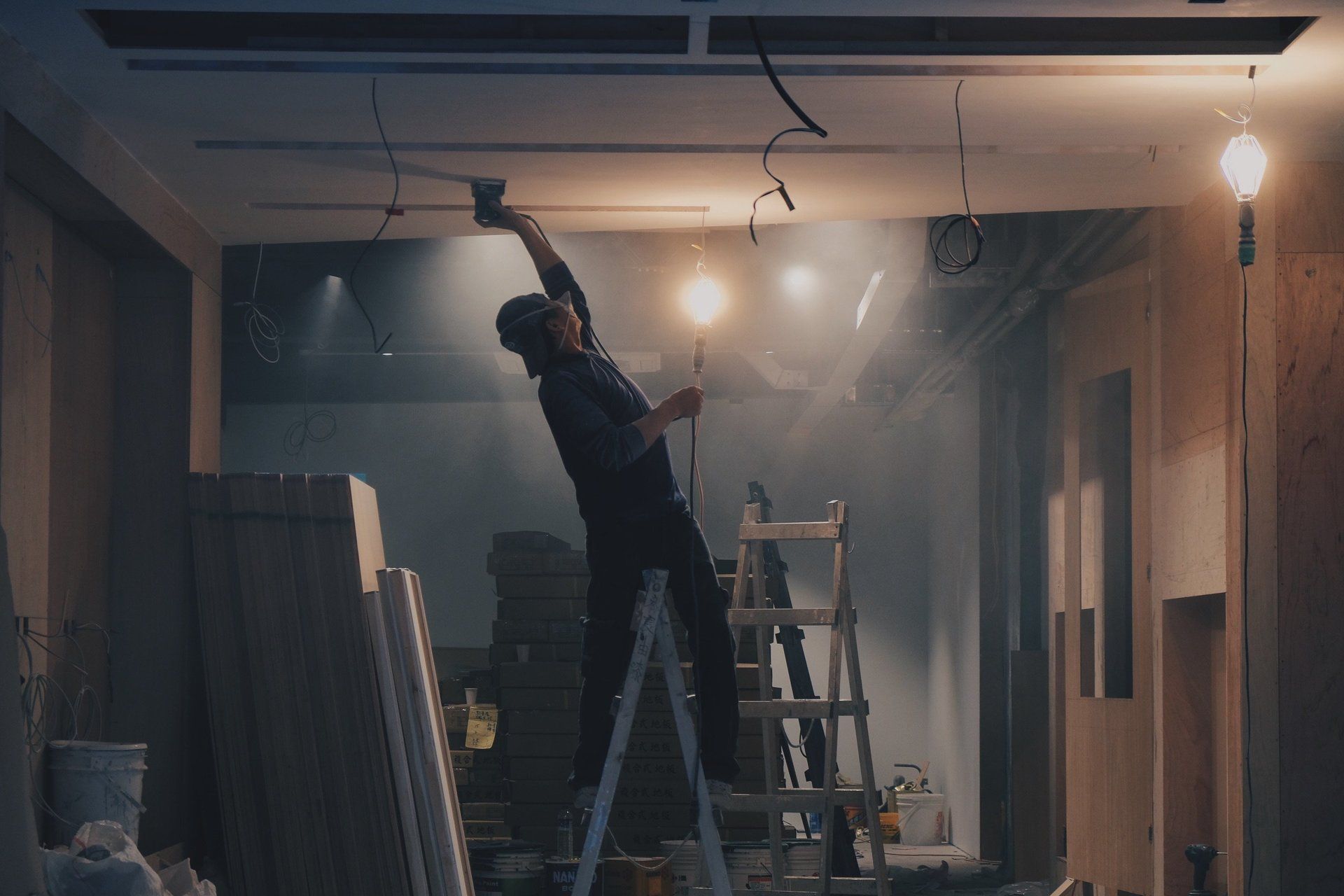What moving south and construction sites taught me
When my parents moved to Southern Manila in the mid-’70s, the area was a vast expanse of rice fields, salt beds, and fish farms, with cool breezes and hardly a building in sight. It was a pristine place to raise children, they decided, compared to the more congested North where they came from. Their peers found this move slightly strange, unable to grasp why anyone in their right mind would want to live so far away from civilization, in what looked like killing fields.
I would go as far as to say that my parents were pioneers, along with the many other intrepid Baby Boomers who made the urban exodus from North to South, each carrying a trunk full of boxes and suitcases filled with gumption and dreams of an exciting future.
The booming real estate market in this municipality brought a surge of young families from far away who all tightly held on to the blueprint of a more laid-back, suburban way of life—one with sprawling lawns, low fences, and a ticket out of the more rigid lifestyle carved out by the generation before them.
As we were among the early settlers, our house was one of the few in our gated community, where the next-door neighbor was several streets away and could be seen across vacant lots without any obstruction, save for trees and high-growing weeds and brambles.
Growing up in uncharted territory made for an interesting childhood. With the number of houses being built around us, my older brother Miguel and I mainly had construction sites for playgrounds. Seeing a new house being built down the road gave us the same thrill any kid would feel when receiving a new toy.
We would jump for joy seeing trucks drive by overflowing with sand and gravel, as if Santa himself were delivering gifts—except that instead of a sleigh, it was a mud-covered 10-wheeler, and instead of a jolly old fellow, Santa was a dark, topless driver with his shirt wrapped around his head and a cigarette in his mouth. He also reeked of gin.
We felt grateful for these gifts nonetheless, which included sacks of cement mix, boxes of five-inch nails, bundles of wooden planks, steel beams, lead pipes, stacks of hollow blocks, and rows of galvanized corrugated GI sheets. It was the ultimate mother lode of all Lego sets.
My parents’ friends were probably correct in calling our place killing fields, because with the kinds of games we played at these construction sites, one wrong move would've led to either debilitating injury or sudden death.
Just before dusk, when all the sawing and hammering had subsided and the carpenters had gone home, Miguel and I would sneak into one of the construction sites and dangle on partially assembled steel beams, jump on wooden planks, and run up unfinished concrete staircases. We would climb mounds of gravel and burrow through heaps of sand, which sometimes had dog poo hiding underneath. And if we were lucky, we would find some leftover wet cement to mold and splatter on the walls. We felt like magical elves helping the carpenters while they were away.
Building a house with nuisances like us was probably more like taking two steps forward and one step back because of all the little damage carpenters had to undo the next morning. And based on the Spartan-branded footprints (from the popular rubber slippers of the time) we left on wet cement, I’m sure the carpenters clearly knew they weren’t dealing with mischievous elves in this case, but two nosy brats from next door.
Needless to say, we had our share of scraped knees and scratched elbows, along with the occasional splinters in our hands and feet. And wearing thin rubber tsinelas
didn’t help much when it came to protruding nails. One time, I stepped on a wooden plank with a rusty old nail sticking out, and punctured my foot. I had to painfully skip back home, dripping blood all over the street.
That was when my parents finally discovered that the neighbor’s house we said we were playing at was the one with no actual neighbors living in it yet. Technically, we didn’t lie. We just weren’t that accurate.
After that incident, we were relegated to playing in the real playground in the neighborhood park, which my parents naively thought was much safer than construction sites. We played this game on the seesaw, where we would use all our weight to stay on the ground, and then quickly jump off our seat so that the kid suspended on the opposite end would come crashing down.
We rarely sat merrily rocking forward and backward on swings. Our goal was to make a full 360-degree revolution, standing on the seat. We didn’t hang from monkey bars; we balanced on top of them. Slides were a game of speed. The fun was in avoiding being kicked hard in the back by the next eager kid behind us, that is, if we were lucky enough not to squeak our way down and burn our thighs on eight feet of shiny hot metal, with solid pavement waiting to catch our fall. Our playground was practically as deadly as any construction site.
Because of our dangerous playgrounds (both official and unofficial), we were able to pick up essential life-preserving skills one would otherwise learn only in prison. Thankfully, neither Miguel nor I have ever been to prison to actually test that theory. Nevertheless, such experiences built in us a sense of fearlessness and resourcefulness. Never mind death from tetanus. No rusty lead pipe was getting in the way of a good adventure.
No thanks to our playgrounds, Miguel and I managed to live long enough to eventually pick up the “moving south” gene from our parents.
Many years later, my own southern wind came calling. It carried me even further down south, to study in the University of the Philippines in Los Baños, Laguna. It was so far south it wasn’t even in Manila anymore. And I even topped that several years later by moving so much further down south I actually flew across the sea to live and work in Malaysia.
Miguel didn’t go as dramatically far south as I did (he usually left the dramatics to me), but he eventually made his own southern trek, this time with his young family. He recently built a house in one of the new residential communities being developed south of Manila (the new killing fields). And just like our pioneering parents before us, he’s carried with him a bagful of gumption and dreams of an exciting future that echoed a now distant childhood, when we ourselves stood small among the many homes that were being constructed around us, learning to build our own lives on new ground.
And we've never truly stopped building ever since. The sawing and hammering in life never stop. We expand. We crumble. We repair. Scrapes and scratches and the occasional rusty nails may come with the experience of discovering something new, but they also allow us to discover the strength of our spirit in the process.
As I now watch my brother’s two young girls build their own experiences in a vast new land (hopefully not sneaking out to play in construction sites), I know that they, too, will follow their own inner compass one day and take their own journey to wherever their heart leads them. And when that happens, I pray that they will always be blessed with the right tools at the right moment to help them create exactly the kind of life they envision.

